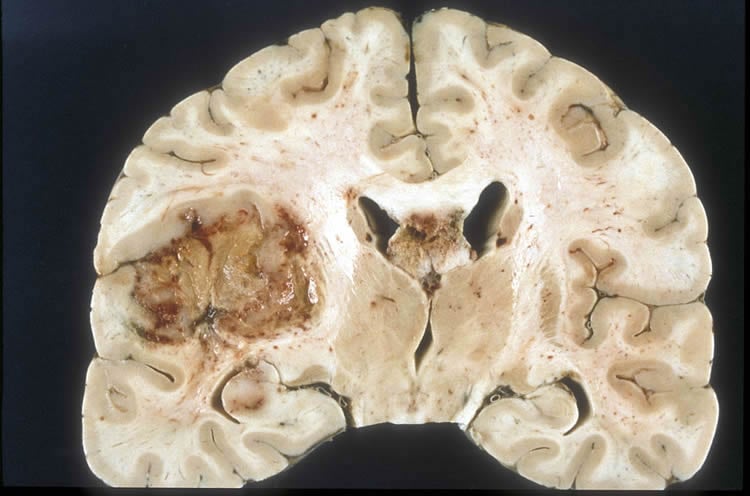Scientists at the University of Toledo Health Science Campus (UT) and Van Andel Research Institute (VARI) have discovered an innovative way that may stop the spread of the most lethal and aggressive brain cancer glioblastoma multiforme (GBM). In laboratory studies, scientists demonstrated that activating a specific family of proteins halted cancer cell migration into healthy tissue.
GBM is the most common brain tumor in adults; in 2010, there were 22,000 cases in the U.S. People with GBM often live fewer than than 15 months following diagnosis because, despite surgery, radiation and chemotherapy, individual cancer cells escape and invade healthy surrounding tissue, making additional treatment attempts increasingly difficult.
“New therapies for GBM are desperately needed,” said UT Assistant Professor Kathryn Eisenmann, Ph.D., corresponding author on the study. “We hope our latest finding will lead to a novel and effective treatment for this extremely aggressive cancer.”
The study, published online Sept. 9 by the American Society of Cell Biology in the journal Molecular Biology of the Cell, expands upon an earlier discovery by VARI Professor Arthur Alberts, Ph.D., of a bioactive peptide called DAD and small molecules called intramimics.
Both DAD and intramimics activate a family of proteins called DIAPHs or mDIA, which are known to play vital roles in GBM spread. Eisenmann’s team, led by first author and M.D./Ph.D. graduate student Jessica Arden, showed that locking DIAPH into an “on” state using DAD, intramimic-01 and intramimic-02 stops GBM cells from invading normal brain tissue.
“Metastatic tumor cells are like any moving vehicle—all of the wheels need to be pointed in the right direction when power is applied,” said Alberts, a senior author on the study. “DIAPHs build the structures that hold and point all the wheels moving cells in the right direction. Dr. Eisenmann’s data suggests that DIAPH activation or ‘agonism’ locks all wheels into arbitrary directions, so no matter how hard you push the pedal down, the tumor cells won’t move.”
Historically, therapies aimed at combating the spread of GBM focused on inhibiting mDIA, a member of the DIAPH family that is integrally involved in cell structure and tumor motility. Earlier work in the the Alberts Laboratory also showed that intramimics could impair tumor growth in colon cancer cells and that they could be a potential therapeutic option for other cancers as well. Little work had been done on molecules that activate mDIA as an anti-GBM therapy, prompting the recent study comparing mDIA activation versus inhibition in GBM.

Alberts and Eisenmann hope to soon evaluate the effectiveness of this new strategy in preclinical models, a crucial step in translating this discovery to the clinic and patients.
“GBM is lethal because it so effectively escapes and evades therapy,” Eisenmann said. “Our hope is this discovery will prove to be an anti-tumor strategy and one that will be safe and effective for patients.”
Source: Beth Hinshaw Hall – Van Andel Institute
Image Credit: The image is in the public domain
Original Research: Abstract for “Small molecule agonists of mammalian Diaphanous-related (mDia) formins reveal an effective glioblastoma anti-invasion strategy” by Jessica D. Arden, Kari I. Lavik, Kaitlin A. Rubinic, Nicolas Chiaia, Sadik A. Khuder, Marthe J. Howard, Andrea L. Nestor-Kalinoski, Arthur S. Alberts, and Kathryn M. Eisenmann in Molecular Biology of the Cell. Published online September 9 2015 doi:10.1091/mbc.E14-11-1502







